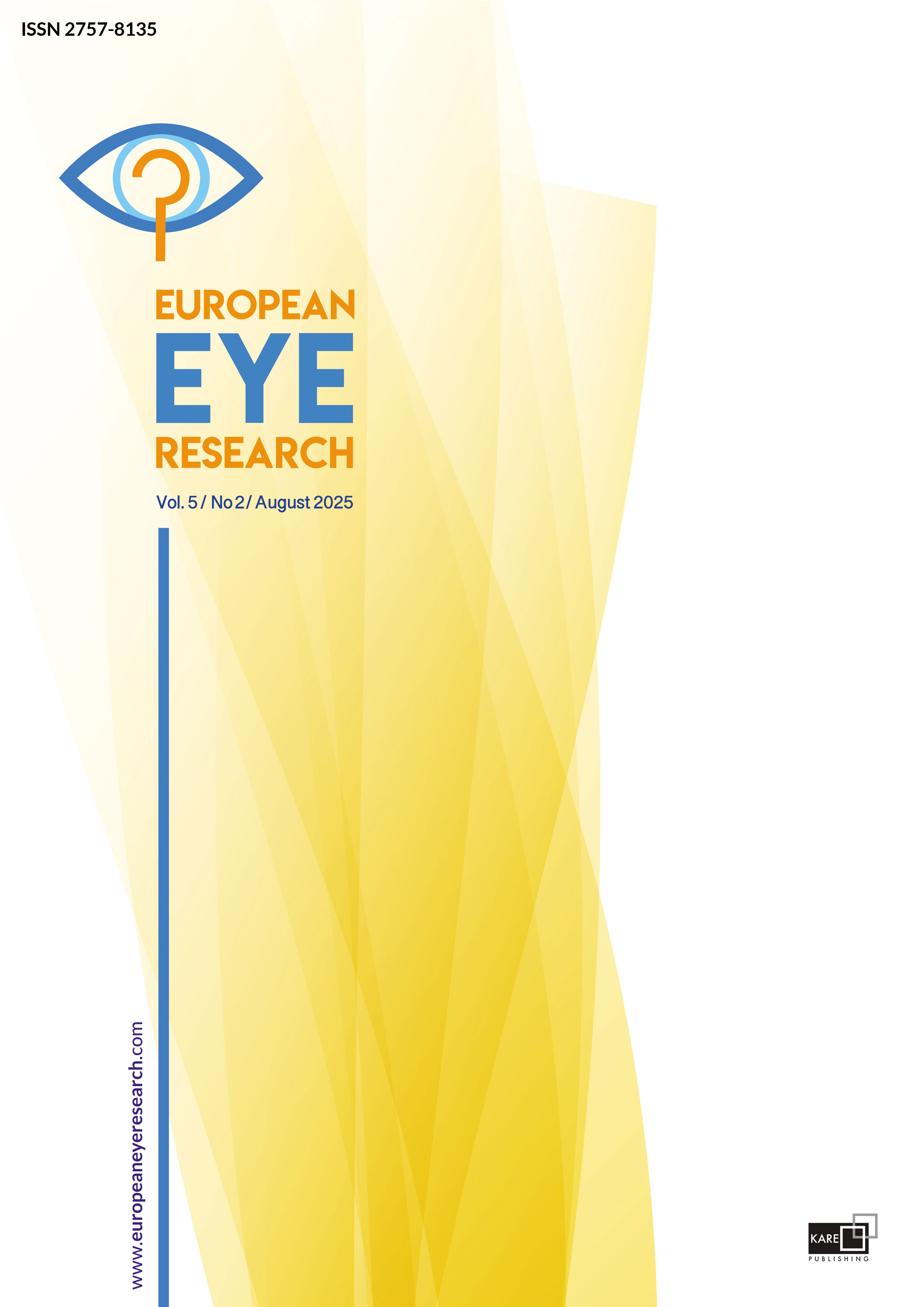

Evaluation of ocular surface features following corneal collagen cross-linking treatment in keratoconus patients: 24-month results
Gozde Sahin Vural1, Esin Sogutlu Sari2, Alper Yazici3, Cenap Guler11Department of Ophthalmology, Balıkesir University, Balıkesir, Türkiye2Department of Ophthalmology, Uludağ University, Bursa, Türkiye
3Department of Ophthalmology, West Eye Hospital, Izmir, Türkiye
PURPOSE: The aim of the study was to determine the effects of corneal collagen cross-linking (CXL) on tear function param-eters in a long-term period retrospectively.
METHODS: Twenty-four eyes of 17 keratoconus patients after CXL treatment were included in the study. The ocular sur-face disease index questionnaire (OSDI), tear osmolarity, tear break-up time (T-BUT), Oxford ocular surface staining score, Schirmer I test, and the National Eye Institute Visual Function Questionnaire-25 were performed before and after CXL at 1st and 24th months. All parameters were compared.
RESULTS: Tear osmolarity significantly increased during follow-up (p=0.001). The increment in T-BUT was significant between pre-operative and 1st month (p=0.001). Oxford grading score increased progressively but the difference was only significant between pre-operative and 24 months (p<0.05). Schirmer’s score improved at 1st month but altered in favor of dry eye at 24 months similar to T-BUT. OSDI and tear osmolarity were significantly increased in all visits (p<0.05).
CONCLUSION: Dry eye disorder was demonstrated as a significant complication of CXL in keratoconic eyes in a long-term pe-riod. Even if we performed CXL at early times, we need to follow patients for ocular surface disorders as well as topographic progression for the period of long time because the side effects of CXL on the ocular surface last up to 24 months.
Manuscript Language: English



